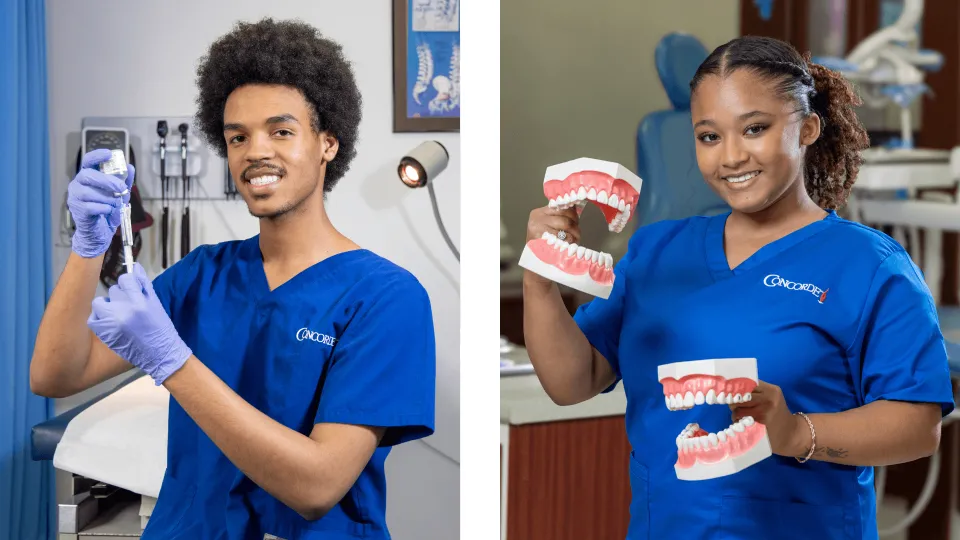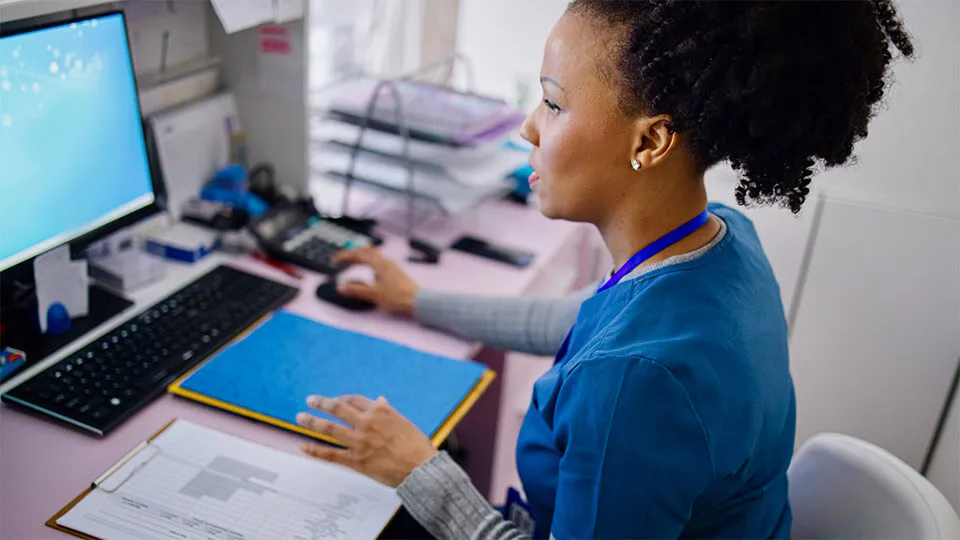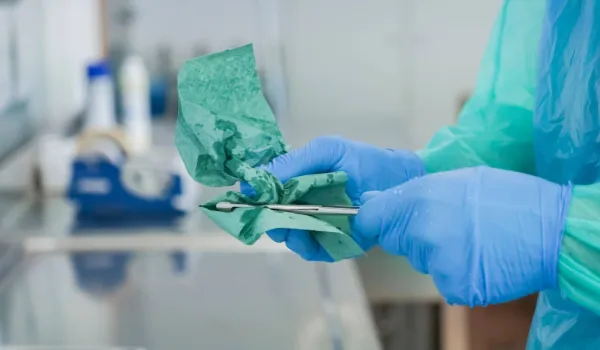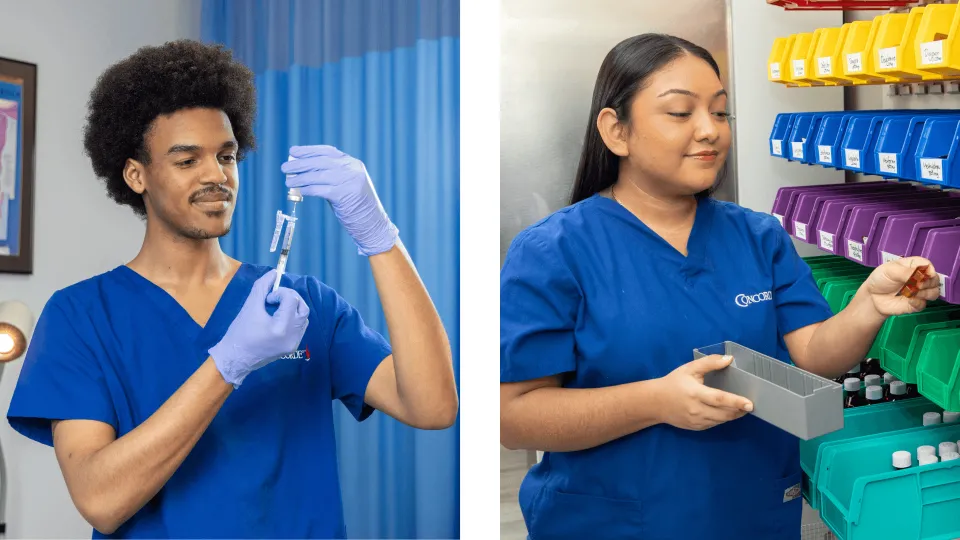
Medical assistants and pharmacy technicians are both entry-level health care positions. Each involves distributing medication and working with patients, making them essential to the health care ecosystem. Both roles require clinical, communication, and basic laboratory skills.
The demand for skilled professionals in support roles is rising as health care evolves. This guide contrasts the roles of a medical assistant vs. a pharmacy technician, including duties, educational requirements, career growth, and how they affect patient safety.
What Is a Medical Assistant? Duties and Responsibilities

A medical assistant is a health care professional trained to complete clinical and administrative work in various health care settings. They usually work in physicians' offices, clinics, outpatient care centers, and hospitals and are often patients' first point of contact. Medical assistants work alongside nurses, physicians, and specialists in team-based environments. Their typical duties will vary depending on their work setting, but may include:
- Supporting physicians and other health care professionals
- Taking vital signs
- Preparing patients for examinations
- Assisting in medical procedures
- Administering medications under supervision
- Performing routine lab tests
- Sterilizing medical equipment
- Giving patients instructions for post-treatment care
- Scheduling appointments
- Maintaining patient records
- Handling insurance forms
- Managing correspondence
- Answering phones and providing important information about health care services
Explore more Medical Assistant articles
What Is a Pharmacy Technician? Duties and Responsibilities
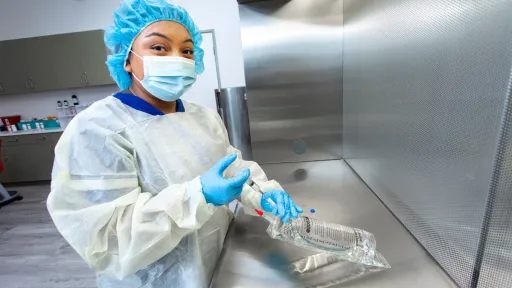
A pharmacy technician is a health care worker trained to work in various settings, including retail pharmacies, hospitals, nursing homes, and mail-order pharmacies. They assist with preparing prescription medicines or substances. Depending on the setting, their duties might range from customer-facing tasks in retail to more behind-the-scenes work in hospitals or long-term care facilities. Their tasks involve medication-related and administrative tasks such as:
- Supporting pharmacists to ensure medications are dispensed accurately
- Receiving prescriptions
- Verifying patient information
- Counting and measuring medications and labeling containers
- Assisting with preparing medications, compounding certain drug forms, and managing medication inventories
- Maintaining patient records
- Processing insurance claims
- Managing stock levels in the pharmacy
Explore more Pharmacy Technician articles
Key Differences in Skills and Work Environment
Medical assistants and pharmacy technicians often perform similar tasks. However, there are differences between their roles, depending on the health care environment. Here are some ways the roles of medical assistant and pharmacy technician differ.
Skills
Medical assistants are trained to perform clinical and administrative tasks, so their skill set is varied. Some key skills may include:
- Communication: Medical assistants require strong interpersonal skills as they interact directly with patients, physicians, and other health care staff. Their ability to explain procedures, reassure anxious patients, and communicate with a diverse range of individuals is vital.
- Work environment: Medical assistants work in fast-paced, patient-facing roles in clinical settings such as doctors' offices, hospitals, or outpatient clinics.
- Patient interaction: The settings they work in require a high level of patient interaction. Medical assistants directly engage with individuals, prepare them for exams, and provide patient care.
- Software: Medical assistants also use medical office software to schedule appointments, manage patient records, and communicate with insurance providers.
- Supervision: Medical assistants typically work under the supervision of physicians or registered nurses. While they are knowledgeable in many clinical tasks, they do not have final decision-making authority.
- Physical demands: The role is physically demanding, requiring being on their feet for extended periods. They may need to help patients into exam rooms, take vital signs, or stand while assisting in medical procedures.
- Collaboration: Medical assistants often collaborate with various health care professionals, including physicians, nurses, and lab technicians; the role is highly interdisciplinary.
Pharmacy technicians' work focuses more on the medication side of health care. Their role revolves around pharmaceutical operations and requires specialized knowledge, including:
- Communication: Pharmacy technicians must provide clear communication about medications, relaying accurate information about dosages, side effects, and instructions for medication to patients and other health care professionals.
- Work environment: Pharmacy technicians primarily work in pharmacies. The work environment is likely quieter, more controlled, and more focused on medication management and operations.
- Patient interaction: Their interaction with patients is often limited to providing medication instructions and answering questions about prescriptions rather than direct patient care.
- Software: Technicians use specialized pharmacy software to manage inventory, track prescription orders, and update patient medication records.
- Supervision: Pharmacy technicians work under the supervision of licensed pharmacists. Although they have specialized medication knowledge, they are not authorized to dispense prescriptions or make clinical decisions independently.
- Physical demands: Pharmacy technicians spend most of their time standing at counters or workstations, measuring and preparing medications. While the work is less physically strenuous than that of a medical assistant, it requires constant attention to detail.
- Collaboration: Pharmacy technicians work closely with pharmacists to ensure the proper dispensing of medications, maintain pharmacy inventory, and interact with other health care professionals, such as physicians, to clarify prescriptions or confirm drug interactions.
Education and Training Requirements
Education and training for these roles is slightly different.
Medical Assistant Requirements
To pursue a career as a medical assistant, a successful candidate typically needs to complete a combination of formal training and hands-on experience, which may include:
- High school diploma or GED: Most medical assistant training programs require students to complete high school and receive a diploma prior to enrollment. Taking math and science can help candidates succeed in their medical assistant certification.
- Accredited program: Candidates must also complete a postsecondary certificate or associate degree from an accredited institution. Concorde Career College offers a Medical Assistant program at select campuses for a diploma or applied science degree that can be completed in as little as nine months.
- Certification: Candidates should gain certification from the National Commission for Certifying Agencies. There are five certification options, but the most common is that of a certified medical assistant through the American Association of Medical Assistants.
- Licensing: Many states do not require licensure, but certification from organizations such as the AAMA can increase career prospects.
- Continuing education: This may be necessary for students who wish to advance in their careers.
Pharmacy Technician Requirements
To pursue a career as a pharmacy technician, a successful candidate may need:
- High school diploma or GED: Most pharmacy technician training programs require students to complete a high school diploma or equivalent.
- Pharmacy Technician program: While candidates may be able to pursue a career as a pharmacy technician with a high school diploma, many employers prefer formal training and/or certification. Concorde offers a Pharmacy Technician program at select campuses to earn a diploma or applied science degree that can be completed in as little as seven months.
- Certification: Certification from organizations such as the Pharmacy Technician Certification Board is highly recommended and is required in some states. Options include the PTCB certification exam or the ExCPT certification exam through the National Healthcareer Association.
- Licensing: Many states require licensure to work as a pharmacy technician. Candidates must also pass a drug screening test.
- Continuing education: Pharmacy technicians may need to complete continuing education to keep their certification.
Career Outlook and Growth Potential

There were 783,900 medical assistant jobs in 2023, and the U.S. Bureau of Labor Statistics projects the role to grow from 12% from 2024 to 2034, which is much faster than the average for all occupations. There are 101,200 jobs for medical assistants projected to open up per year across the decade. These jobs are likely to arise due to workers changing careers or retiring. Medical assistants may advance by specializing in pediatrics, obstetrics, or cardiology with more training, and these additional certifications in specific medical fields can improve job prospects. Some may also move into office management or supervisory positions.
The need for pharmacy technicians is projected to grow by 6% from 2024 to 2034, faster than the average. About 31,500 jobs are projected to open up each year during the decade. This is likely due to existing workers switching career paths or retiring. Pharmacy technicians may pursue specialization in areas such as chemotherapy, nuclear pharmacy, or geriatric pharmacy. Pharmacy Technicians can take on supervisory roles or work toward careers as pharmacists with additional training and certifications.
Conclusion: Choosing the Right Path
Both roles support health care providers and ensure quality patient care. While the duties of a medical assistant and a pharmacy tech differ, both careers offer solid opportunities for growth. Choosing between the two ultimately depends on your interests in patient care vs. medication management, work environment preferences, and long-term career goals. Whichever path you choose, both professions provide a chance to contribute meaningfully to the health care system. Get started training as a medical assistant or pharmacy technician by contacting a Concorde admissions representative.
U.S. Bureau of Labor Statistics. (2024, August 29). Medical Assistants : Occupational Outlook Handbook: : U.S. Bureau of Labor Statistics. Bls.gov. https://www.bls.gov/ooh/healthcare/medical-assistants.htm
Scott, D. M. (2016). United States Health Care System: A Pharmacy Perspective. The Canadian Journal of Hospital Pharmacy, 69(4). https://doi.org/10.4212/cjhp.v69i4.1585
DEA. (2025). Drug Scheduling. Www.dea.gov; United States Drug Enforcement Administration. https://www.dea.gov/drug-information/drug-scheduling
Morris, G. (2020, June 3). How To Become A Certified Medical Assistant - NurseJournal.org. NurseJournal. https://nursejournal.org/careers/medical-assistant/how-to-become/
Choose PTCB. Choose Excellence. (2019). Ptcb.org; PTCB. https://www.ptcb.org/credentials/certified-pharmacy-technician
U.S. Bureau of Labor Statistics. (2019, April 12). Pharmacy Technicians : Occupational Outlook Handbook: : U.S. Bureau of Labor Statistics. Bls.gov. https://www.bls.gov/ooh/healthcare/pharmacy-technicians.htm
Take The Next Step Towards a Brighter Future
Interested in learning more about our Medical Assistant program?
We have a Concorde representative ready to talk about what matters most to you. Get answers about start dates, curriculum, financial aid, scholarships and more!

